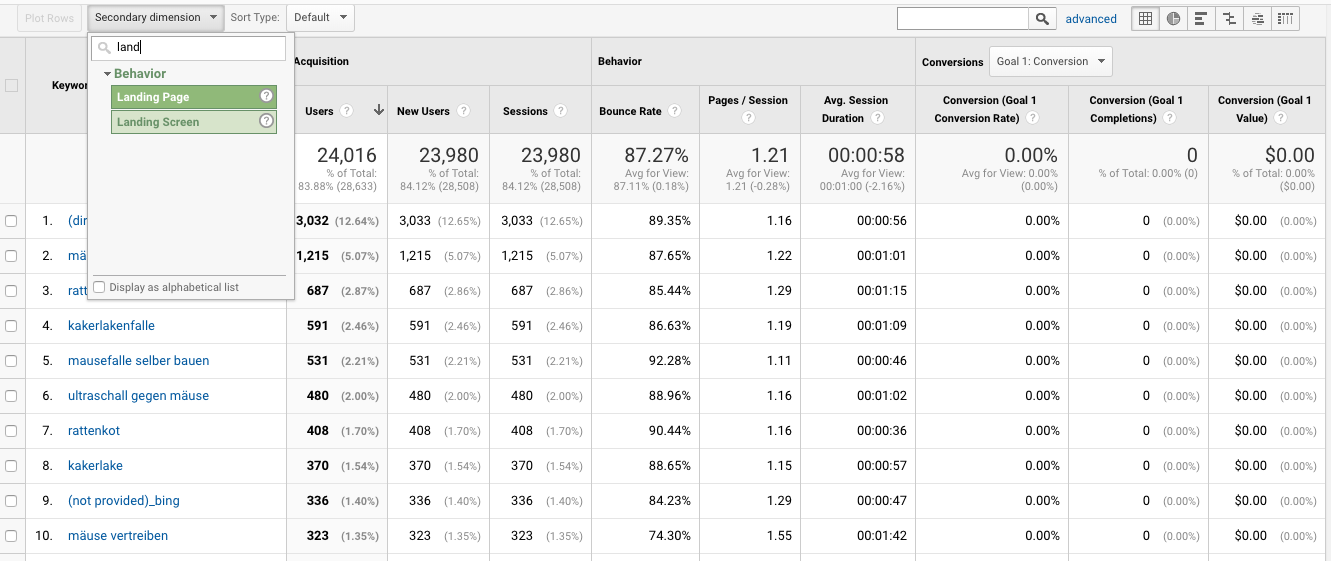Optimizing Your Digital Technique With Additional Dimension Analytics: a Comprehensive Guide
In the world of digital approach, the use of secondary measurement analytics can offer an extensive understanding of customer actions and web site efficiency. By delving deeper right into the layers of data past the primary metrics, services can uncover useful understandings that pave the means for tactical decision-making and improved performance.
Comprehending Second Dimension Analytics
Comprehending Secondary Dimension Analytics gives an essential understanding right into the advanced logical devices utilized in contemporary information evaluation practices. These analytics dig much deeper than primary dimensions, using an extra extensive understanding of data patterns and fads. By incorporating secondary dimensions, experts can sector and filter information to uncover covert understandings that might not appear with primary analysis alone.
Additional Measurement Analytics makes it possible for a more granular evaluation of data by introducing extra criteria that can be put on the key dimensions - secondary dimension. This approach allows for a much more nuanced examination of numerous information points, leading to a much more detailed analysis of complicated datasets
In Addition, Second Measurement Analytics plays a substantial duty in boosting information visualization strategies. By including second measurements right into aesthetic depictions, such as graphes or graphs, analysts can offer information in an extra informative and detailed fashion, making it less complicated for stakeholders to realize vital understandings and make informed choices based upon the information provided.

Carrying Out Additional Dimensions Efficiently
Utilizing secondary measurements purposefully improves the depth and accuracy of information evaluation processes, permitting extra specific understandings and notified decision-making. When implementing second measurements efficiently, it is essential to first recognize the crucial metrics that line up with your specific objectives and goals. By selecting one of the most appropriate secondary measurements, such as demographics, behavior, or modern technology, you can customize your analysis to remove significant understandings.
Moreover, organizing and structuring your second dimensions in a sensible way within your analytics platform can enhance the data analysis process. secondary dimension. This entails categorizing measurements based on their partnerships and importance to the key metrics being evaluated. Developing customized records or dashboards that include these secondary measurements can also assist in a more detailed understanding of user interactions and actions
Furthermore, consistently evaluating and readjusting your secondary dimensions based upon the evolving requirements of your digital approach is essential for maintaining the relevance and effectiveness of your data analysis initiatives. By constantly optimizing making use of secondary dimensions, you can make the most of the utility of your analytics tools and drive educated decision-making within your organization.
Analyzing Data for Actionable Insights

To start the procedure of examining information for workable understandings, click to read more it is vital to establish clear objectives and key performance indicators (KPIs) that align with the like it organization's goals. By specifying what success resembles for the specific metrics being analyzed, it becomes easier to identify meaningful patterns and fads that can educate decision-making.
In addition, making use of devices such as division and comparison analysis can supply extra context to the data, allowing for more nuanced understandings to be attracted. By damaging down data into smaller sized, extra workable subsets, organizations can reveal surprise chances and areas for improvement that might not be noticeable when checking out the data overall.
Optimizing Digital Strategy With Searchings For
Enhancing digital techniques via workable insights amassed from information analysis is crucial for attaining ideal performance in today's affordable landscape. Once valuable searchings for have been removed from the data, the following action is to leverage these understandings to optimize electronic techniques effectively. One vital element of this optimization procedure is the identification of fads and patterns that can direct decision-making and source allocation.
By analyzing the information findings, businesses can identify areas of stamina and weak point within their digital approach. This info can after that be utilized to improve marketing projects, enhance individual experience, and drive total performance enhancement. If the data exposes a certain market group that is extremely involved with particular types of material, organizations can customize their techniques to much better target and provide to this target market segment.
Furthermore, enhancing digital method with searchings for likewise includes continual surveillance and analysis to make certain that the implemented changes are producing the desired results. By iteratively refining strategies based upon data-driven understandings, organizations can remain in advance of the competitors and adapt to the dynamic digital landscape effectively.
Measuring Success and Iterating
Gauging success in electronic method execution includes evaluating essential performance indications to determine the performance of techniques and strategies deployed. This analysis is vital in figuring out the effect of the digital campaigns on the general company objectives. By tracking metrics such as internet site web traffic, conversion rates, click-through prices, and interaction levels, organizations can examine the performance of their electronic campaigns and make data-driven decisions for renovation.
Once the data has actually been accumulated and analyzed, it is necessary to repeat on the strategies based on the insights got. By recognizing what is working well and what needs enhancement, organizations can improve their digital technique to improve outcomes.
Verdict
In conclusion, incorporating second measurement analytics right into your digital technique can provide valuable understandings and boost decision-making. By efficiently implementing and analyzing information, services can optimize their electronic methods for success.
Comprehending Secondary Measurement Analytics supplies an important insight right into the sophisticated analytical devices used in modern information analysis techniques. These analytics dig deeper than key dimensions, offering an extra site web extensive understanding of information patterns and patterns. By incorporating second dimensions, experts can segment and filter information to discover surprise insights that might not be evident with primary evaluation alone.
Utilizing additional dimensions tactically enhances the depth and precision of data evaluation processes, permitting for more exact insights and notified decision-making.Furthermore, organizing and structuring your second dimensions in a sensible manner within your analytics platform can simplify the data interpretation procedure.